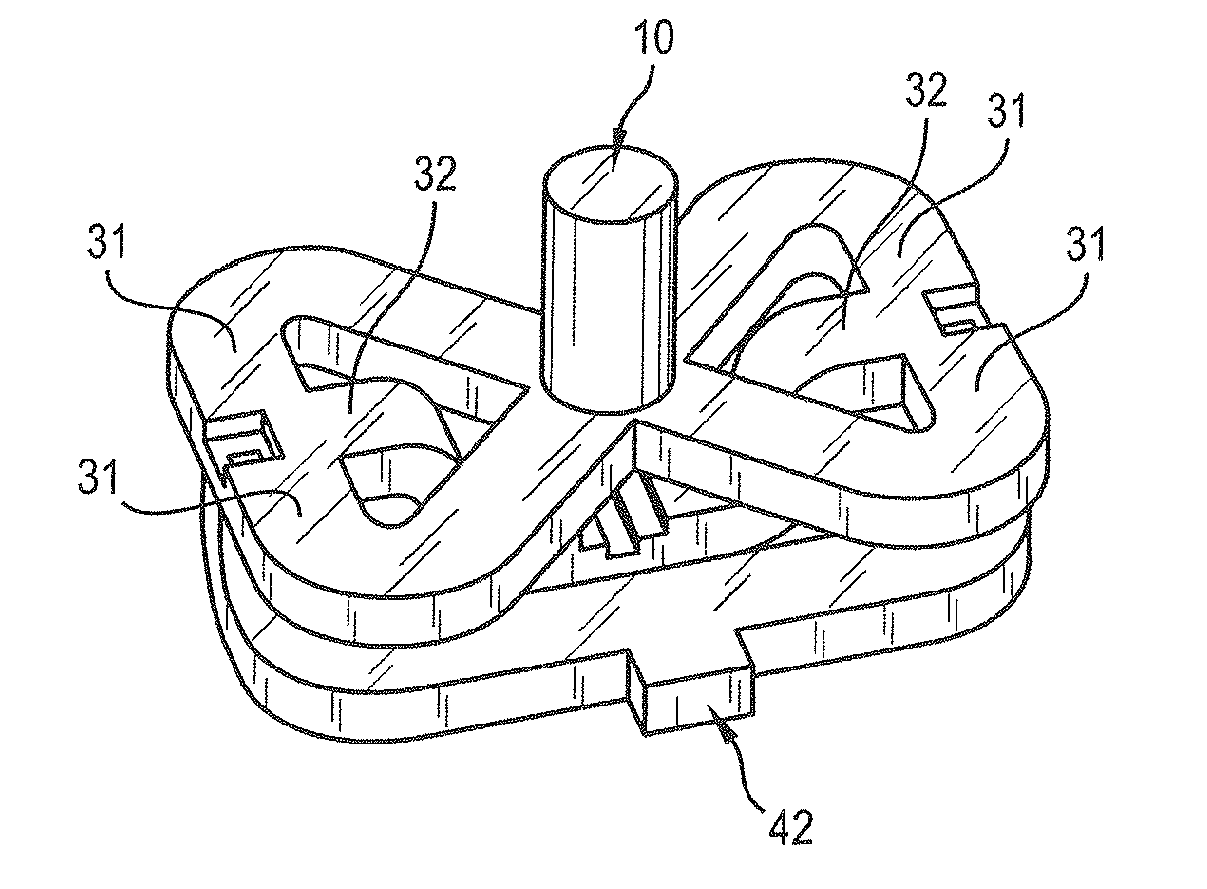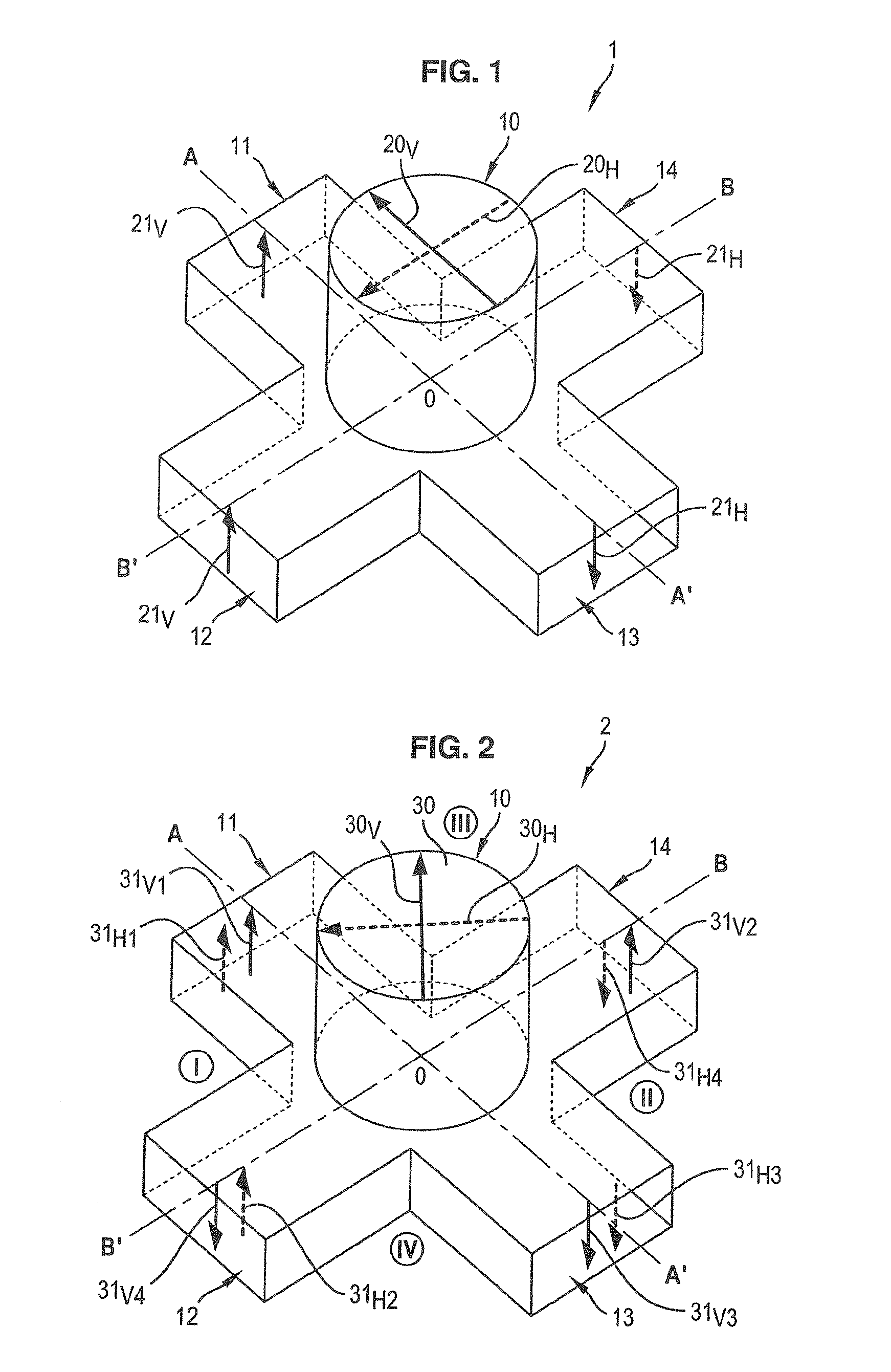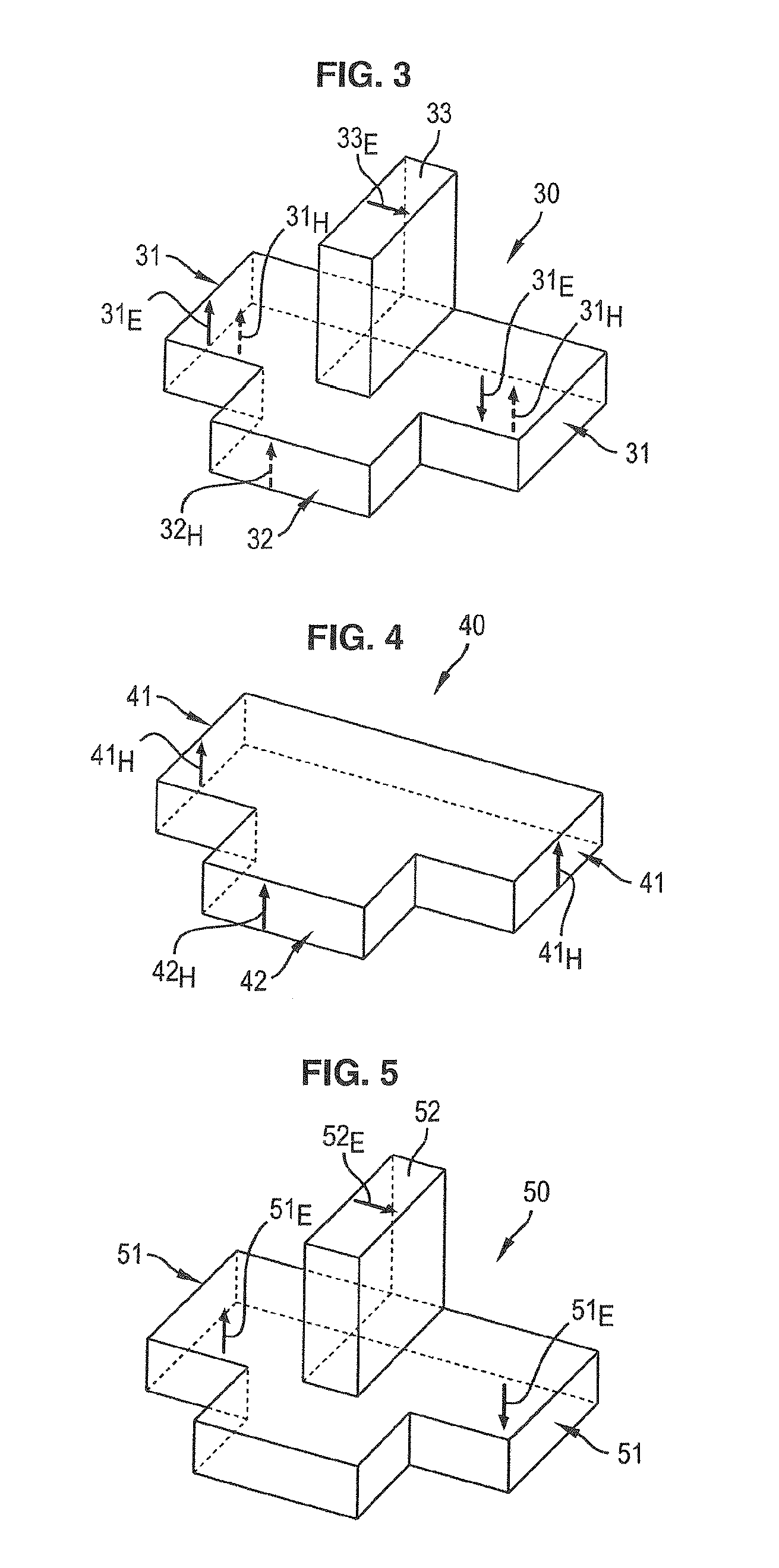Waveguide orthomode transducer
a transducer and waveguide technology, applied in the field of wave transmission lines, can solve the problems of limiting power handling, increasing insertion loss, and high manufacturing precision sensitivity, and achieve good performan
- Summary
- Abstract
- Description
- Claims
- Application Information
AI Technical Summary
Benefits of technology
Problems solved by technology
Method used
Image
Examples
Embodiment Construction
[0050]Design of the Waveguide Orthomode Transducer
[0051]The Non-Conventional Use of the Turnstile Junction
[0052]The waveguide orthomode transducer is based on a non-conventional use of the turnstile junction. In fact, the conventional turnstile junction can separate by itself two orthogonal polarizations, the complexity then comes from the combination network (see FIG. 1).
[0053]FIG. 2 illustrates the non-conventional use of the turnstile junction.
[0054]In order to reduce the complexity of the combination network without crossings, the conventional junction is 45 degrees rotated which means that the signal enters in the transducer by the main waveguide 10 according to an orientation of 45° relative to the main axis AA′, BB′ of the junction 2.
[0055]A consequence of such a rotation is that the two polarizations are present in the four auxiliary waveguides 11-14, and the power of the radio-frequency signal entering in the transducer is divided by four.
[0056]A radio-frequency signal incl...
PUM
 Login to View More
Login to View More Abstract
Description
Claims
Application Information
 Login to View More
Login to View More - R&D
- Intellectual Property
- Life Sciences
- Materials
- Tech Scout
- Unparalleled Data Quality
- Higher Quality Content
- 60% Fewer Hallucinations
Browse by: Latest US Patents, China's latest patents, Technical Efficacy Thesaurus, Application Domain, Technology Topic, Popular Technical Reports.
© 2025 PatSnap. All rights reserved.Legal|Privacy policy|Modern Slavery Act Transparency Statement|Sitemap|About US| Contact US: help@patsnap.com



